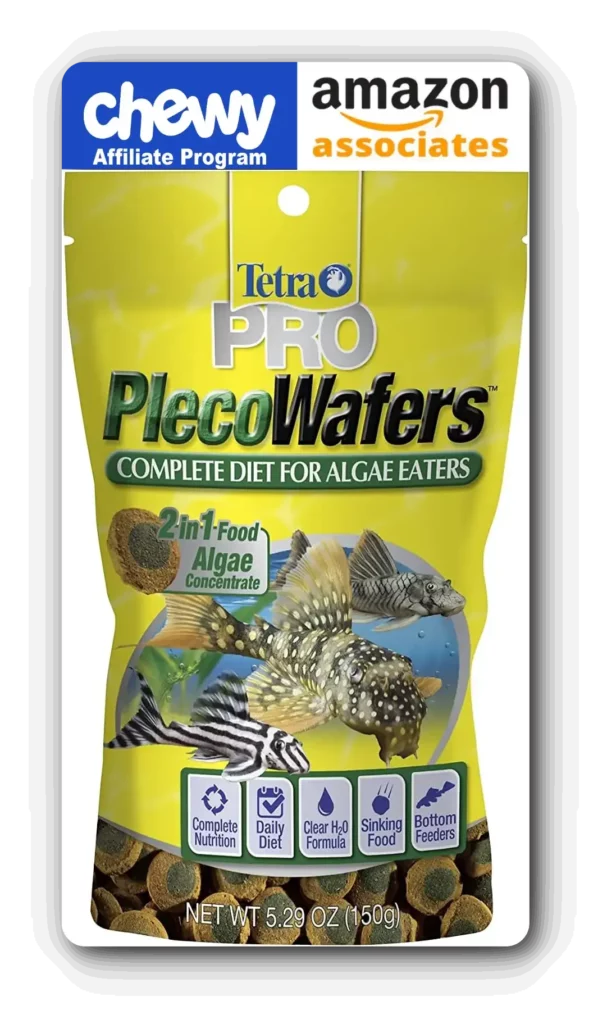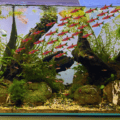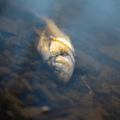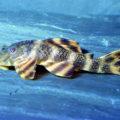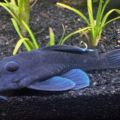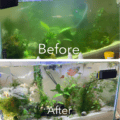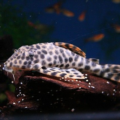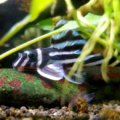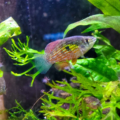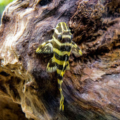The secret behind maintaining the algae-eating catfish Parotocinclus jumbo also known as the Pitbull Pleco. This guide include healthcare, identification, living conditions, breeding tips, and overall well-being.

Owning an aquarium is one of the underexplored joys of existence because water dwellers are fascinating creatures, but tank maintenance can be a task unless you have a small algae-eating fish to deal with hard-to-clean areas!
Introducing the compact and peaceful Parotocinclus jumbo, or as you may know it, Pitbull Pleco, known for its algae-eating efficiency. This Parotocinclus jumbo overview shows you that you can master your Pitbull Pleco care in a short time. Let’s get you started.
Understanding the Unique Features of Pitbull Pleco
Identifying Pitbull Pleco is the first step to understanding their unique features and overall well-being. So, how do you know you’re looking at a pitbull pleco?
You can identify it with its Parotocinclus species features. At their largest, Pitbull Plecos stretch between 6-7.5cm, smaller than most, despite having a similar streamlined body.
Color Pattern

This fish has an interesting scale pattern that’ll leave you in awe. Its speckled light grayish-brown scales form a sort of armor plate that reflects a gold or silver hue, depending on the lighting. But when you touch the scales, they feel smooth and almost slippery on your fingers.
Unique Traits
Pitbull Plecos are a compact aquarium fish in comparison to larger pleco species, while still having the typical pleco traits of clinging to surfaces and grazing on algae, this allows them to effortlessly clean the crevices of your tank.
Setting Up an Ideal Aquarium for Pitbull Plecos

Just because you know your Pitbull Pleco would enjoy an algae-rich surface doesn’t mean you shouldn’t clean your tank or curate a perfect habitat for them. So, let’s build an ideal habitat for Parotocinclus jumbo with moderately flowing clean water set to the correct parameters.
Tank Size and Layout
We’ll start this Pitbull Pleco tank setup with sizing and layout. You need a tank that holds 15-20 gallons of water for a small group of 4 Pitbull Plecos, and it can be rectangular or tall. Next, you must design the interior with open swimming spaces for your pets to move freely.
Water Parameters
We’re building a freshwater aquarium for algae eaters to mimic Pleco’s natural habitat when setting the water parameters.
| Temperature | 72 – 78℉ |
| pH Level | 6.5 – 7.5 |
| Hardness | Soft to Moderately Hard |
Substrate and Decor
Pitbull Plecos need smooth substrate because they love to forage. Use fine sand or smooth gravel for the tank’s base, and then add driftwood, rocks, and plants to give them natural hiding spots without obstructing the water flow.
Feeding the Pitbull Pleco: A Balanced Approach

Although Pitbull Plecos appreciate an algae-based aquarium diet, they’re omnivorous and need other types of food for a healthy life. You must add supplementary foods to their meals that make a balanced diet for small catfish.
Here are some examples of how and when to feed your pets.
Diet Suggestions
Give Pitbull Plecos algae wafers as staples, then add blanched veggies like spinach and zucchini and protein-based foods like bloodworms and sinking pellets as occasional supplements.
For more on feeding your aquatic pets check out The Ultimate Guide to Fish Food: Pros and Cons & Best Choices!
Feeding Tips
More tips for feeding Pitbull Plecos include:
- Placing the food near substrate areas for foraging
- Serving portions they’ll finish in 2-3 minutes
- Feeding them only twice to thrice daily
Breeding Pitbull Plecos: Tips for Captive Spawning

Another complex aspect of caring for this species is reproduction because breeding Pitbull Plecos away from their natural habitat is rare. However, with the right breeding setup and fry care tips, you can create the right environment for spawning.
Breeding Setup
Get a 20-gallon tank per pair of breeders and set the following water parameters:
| Temperature | 77 – 80℉ |
| pH | 6.5 – 7 |
| Hardness | 4 – 6 dGH |
Stabilize the water conditions, use low to moderate lighting for less stress, and add flat surfaces in the caves to lay eggs. Feed your pets a high-protein diet to prepare their bodies for spawning Parotocinclus jumbo.
When the females lay their adhesive eggs, the male fertilizes them and guards the newborns while fanning them until they hatch within 3-5 days.
Fry Care Tips
Upon hatching, the Pitbull Pleco fry absorb their yolk sac within the first two days. Note, that this species needs specialized fry care for algae eaters because of their dietary preferences.
Add powdered algae-based food and infusoria to their early meals.
Monitor tank mates and separate fry based on size as they grow. Once mature, quarantine them for a few weeks before adding them to the community tank.
Compatible Tank Mates for Pitbull Plecos
Pitbull Plecos are a peaceful community aquarium species, so pairing them with others shouldn’t be a problem. However, when choosing tank mates for pitbull plecos, you must consider three factors: size, temperature, and environmental needs.
Some compatible fish for small algae eaters include small tetras, rasboras, dwarf cichlids, and livebearers like guppies.
Avoid large or aggressive fish that may outcompete your pets for resources, leading to stress, malnourishment, or harm.
Preventing Health Issues in Pitbull Plecos
Maintaining healthy algae eaters starts from their living conditions to their diet because they face potential health concerns like stress, poor water quality, and malnutrition.
Preventative Measures
If you care about preventing aquarium fish disease, avoid health triggers by following the instructions in this guide, including regular tank maintenance, stabilizing water conditions, and feeding a proper diet.
Signs of Illness
Watch your pets for illness symptoms like reduced activity and faded colors, which could point to bacterial infections, stress, or parasitic infections. If your pets show symptoms, always change the water, tankmates, and visit the vet for medication.
Remember that Pitbull Pleco health care starts with top-notch tank maintenance.
Lifespan of Pitbull Plecos: Ensuring Long-Terms Health
You’re probably tired of hearing that proper tank maintenance and balanced nutrition are the keys to long-term aquarium fish health, but it’s true. Because your Pitbull Pleco living up to 8-10 years depends on these lifespan factors.
What’s its diet? Who are the tank mates? Do you maintain consistent tank conditions to prevent stress?
Care Tips for Longevity
Simple routine observation and proactive care practices are the only Parotocinclus Lifespan tips you need when caring for Pitbull Plecos. Scroll back up to see these proactive care practices.
Conclusion
This is a complete freshwater catfish guide for Pleco lovers, and I’ve covered every base. But, before you leave, let’s go over the small algae eater care tips contained in this guide:
- They’re tank-cleaning pets because of their algae-eating efficiency
- They are good tankmates because they’re peaceful
- Their small size makes them ideal for small and medium-sized aquariums
- They thrive in natural environments.
If you follow the tips in this Pitbull Pleco care guide, you’ll be ready to own a personal or commercial tank filled with Parotocinclus jumbos.

